Recently I was gifted an old film camera, the National Panasonic C-500AF. Thank you my old friend Rob Smith for your thoughtfulness. It is branded “National“… and for those of us who can remember, this was the branding of Panasonic before becoming National Panasonic, then simply Panasonic in 1988.
Specifically the camera is a National C-500AF: Autofocus 35mm camera with auto exposure control, auto load, motorised film advance and rewind.
Lens 35mm f3.8 of four elements in four groups.
Shutter 1/30sec – 1/500sec @ ISO 100
ISO range 50-1600 with DX sensing
To say that I was excited by the gift was totally off the mark. Underwhelmed might better describe my initial reaction.
Here is the National Panasonic C-500AF, followed by some samples from that first roll.
It came complete with a roll of colour Kodak film of the era, that had failed to advance when the shutter was activated – essentially a brand new film from the 1980s that had not weathered too well in the intervening years. It was Kodak 400 colour negative film, which I took to be Ultramax. This film had been sitting in the camera for around thirty plus years, and had endured more than thirty Australian summers with guaranteed forty degree celsius (104F) days and weeks each year. Not the best of conditions for preserving photographic emulsion integrity!
How much fun could this be! Still not sure, but with nothing to lose, I thought that I would give it a go.
Two new AA batteries and an adjustment of the film leader and we were good to go.
The lens is a 35mm f3.8 – probably based around a Tessar design – in its well-proven four element layout. The famous Carl Zeiss Tessar has been copied by virtually every lens manufacturer, and is still the mainstay of mobile phone cameras today.
Wandering downtown with this old point and shoot plastic C-500AF and its ancient film inside certainly drew some looks from puzzled passers by.
Workmen were erecting new shade sails along the promenade of our Town Green.
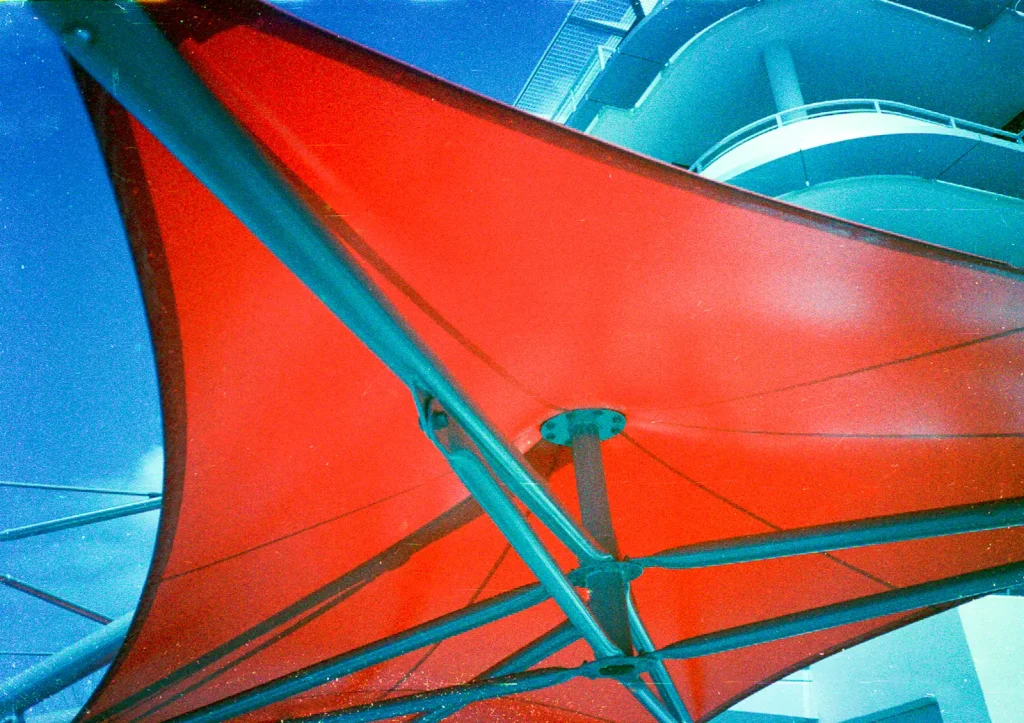
I liked the colour of the sails, but could not have imagined the beautiful way the film would show the buildings and the sky behind.
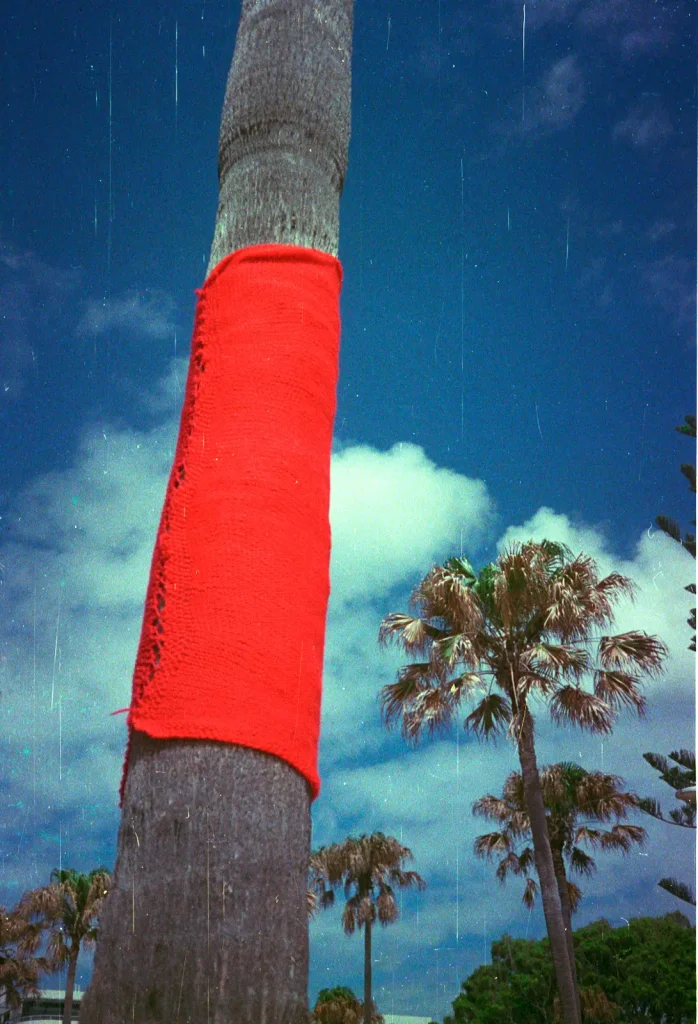
This coincided with a display of red knitting draped across many of the trees and fixtures – this as part of a Granny Graffiti project designed to boost awareness about dementia, in conjunction with a regional dementia conference hosted in our town.
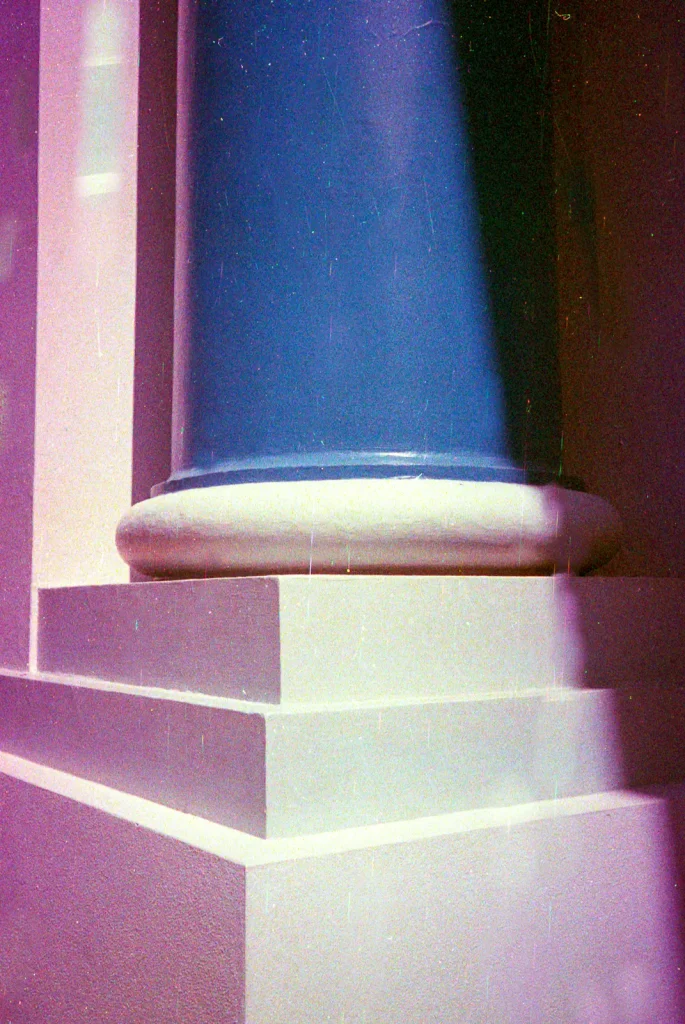
The colour shifts in the film were not natural but amazing at the same time. In these images you can see the beginnings of emulsion failure as well.
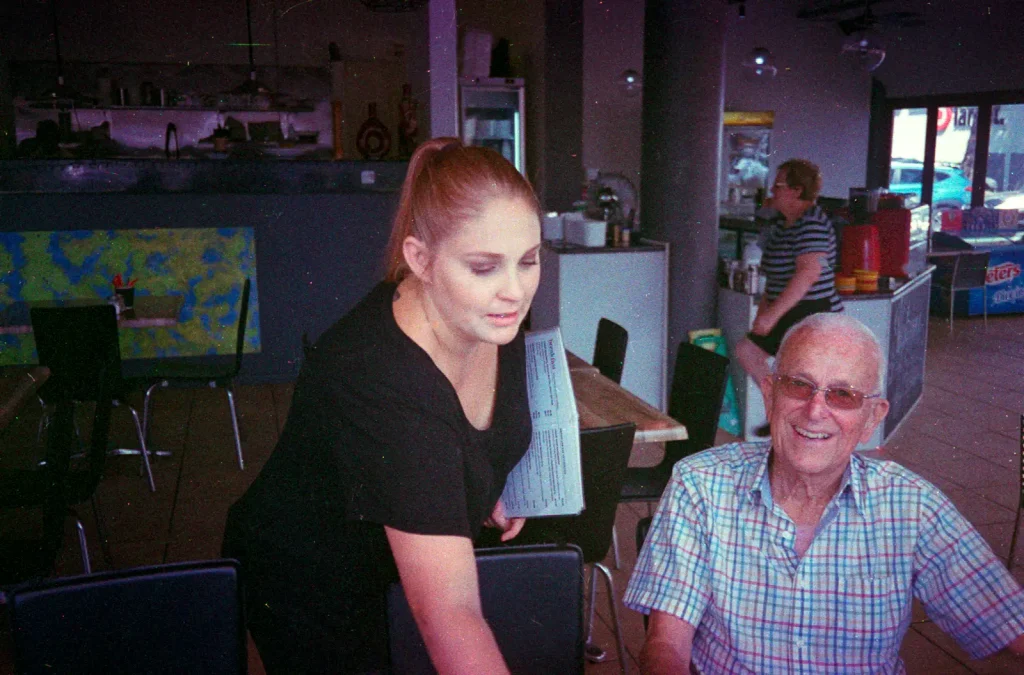
I had forgotten how much fun it is to simply forget about all the technical aspects of image making, and to concentrate on composition and artistic expression. I regularly shoot black and white film and I am accustomed to careful, deliberate and thoughtful implementation of each shot. A roll of 135 with 36 exposures can take a month to complete sometimes.
I finished the roll of film in the National Panasonic C-500AF much faster than I thought I would – I was really having fun with it, and delivered it to the Kodak shop in our town for development.
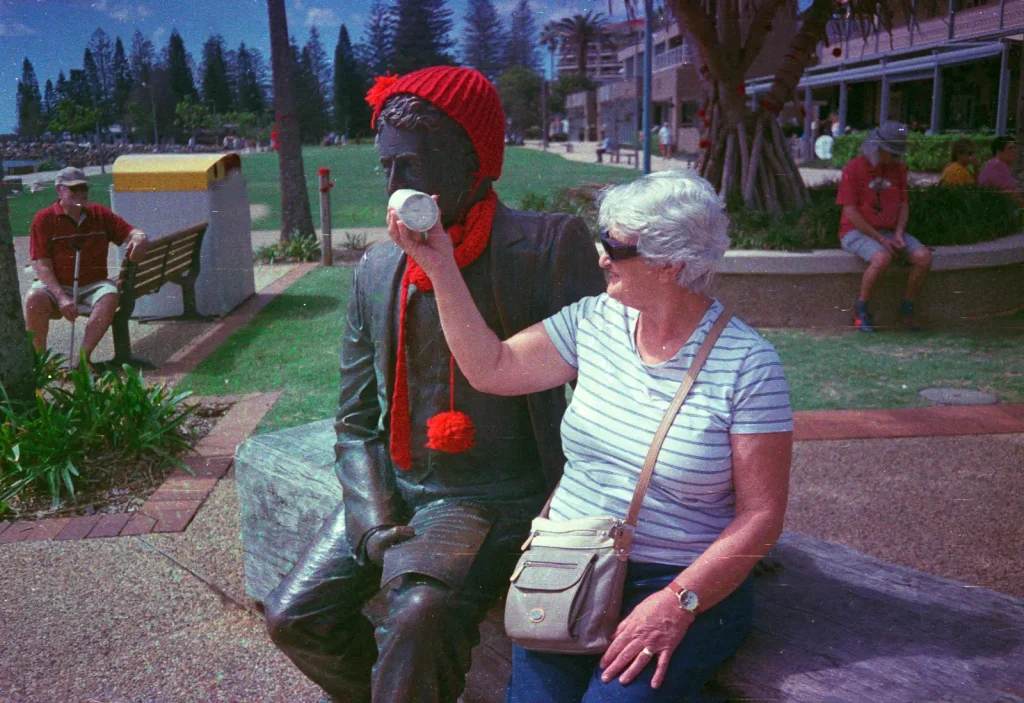
In the 1980s our then-much-smaller-town boasted seven full time photographic labs with same day service, and each of the more than twenty pharmacies (drug-stores) also offered film processing.
Today our little Kodak shop is the only one left, and the film is sent away for processing. A two-week turnaround is normal.
The sense of anticipation as I waited for the negatives shot with the National Panasonic C-500AF to come back, was something that I haven’t experienced for decades – and it was delicious.
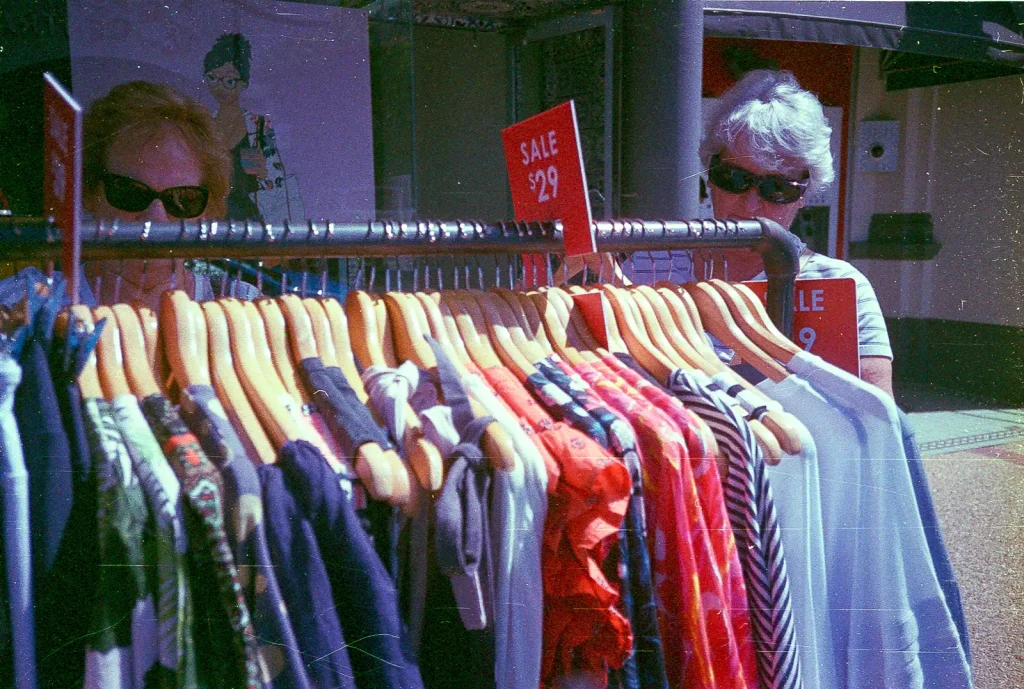
The resulting negatives from the C-500AF showed all the signs of a film that hadn’t aged well – spots, scratches, emulsion degradation and lots of colour shift. But what a joy to view them. I felt like a kid in a candy shop.
The images reproduced here still show many of those flaws, but I kind of like them as they are a part of this film’s history.
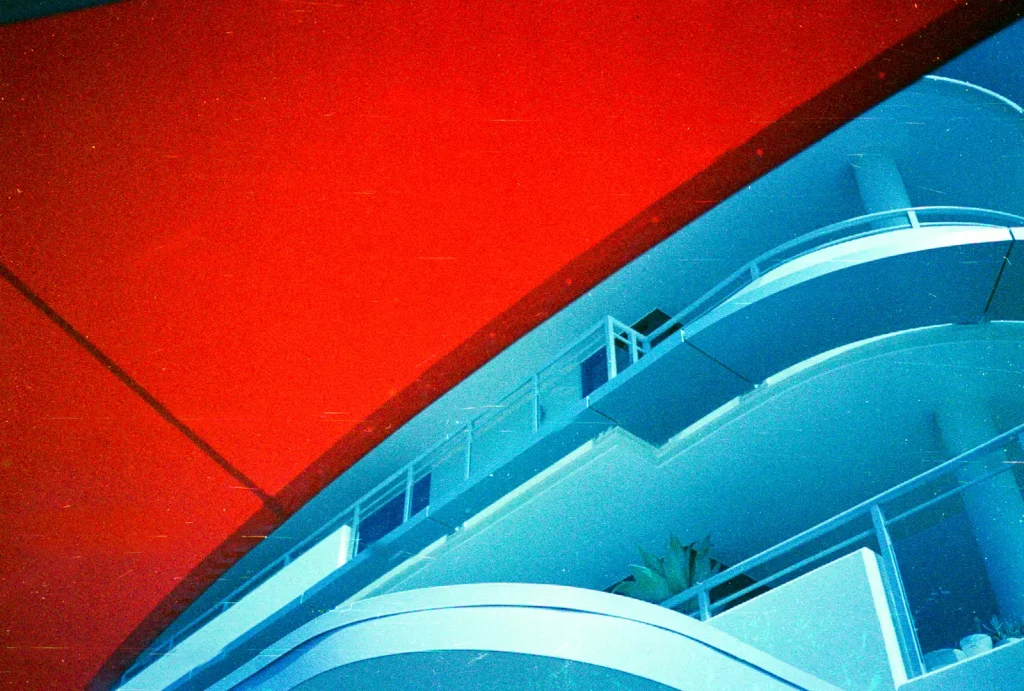
Move over monochrome – you will be sharing the stage in future. Will I shoot colour film in the National Panasonic C-500AF again – you bet!
Now, where can I find some more Kodak colour negative film from the 1980s that doesn’t mind showing its age. The hunt begins.
Tom Sheppard
Share this post:
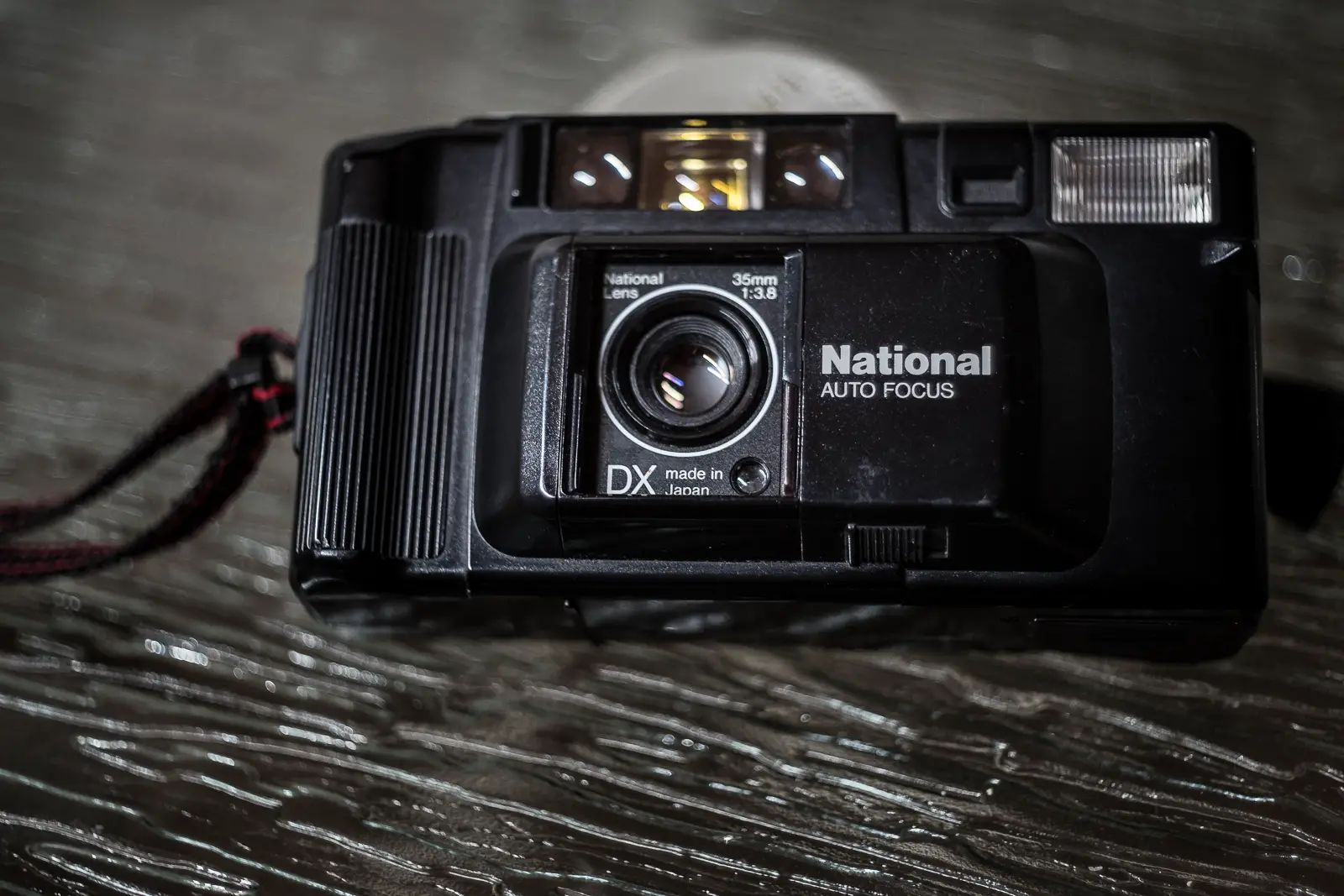








Comments
CJS on National Panasonic C-500AF – The Little Plastic Camera that Could – by Tom Shappard
Comment posted: 08/05/2019
Comment posted: 08/05/2019
Terry B on National Panasonic C-500AF – The Little Plastic Camera that Could – by Tom Shappard
Comment posted: 08/05/2019
Comment posted: 08/05/2019
Roman on National Panasonic C-500AF – The Little Plastic Camera that Could – by Tom Shappard
Comment posted: 09/05/2019
Comment posted: 09/05/2019
crispin on National Panasonic C-500AF – The Little Plastic Camera that Could – by Tom Shappard
Comment posted: 14/05/2019
Comment posted: 14/05/2019
Ian on National Panasonic C-500AF – The Little Plastic Camera that Could – by Tom Shappard
Comment posted: 22/05/2019
Tom Sheppard on National Panasonic C-500AF – The Little Plastic Camera that Could – by Tom Shappard
Comment posted: 22/05/2019
It is a great little camera.
I have shot two different compacts since then and am awaiting the film processing - the lab has a pump problem so delays :(
The ergonomics of the little National C-500AF are better than the Canon and Nikon that I have used and I guess that will be the subject for a future contribution.
Happy snaps
Tom